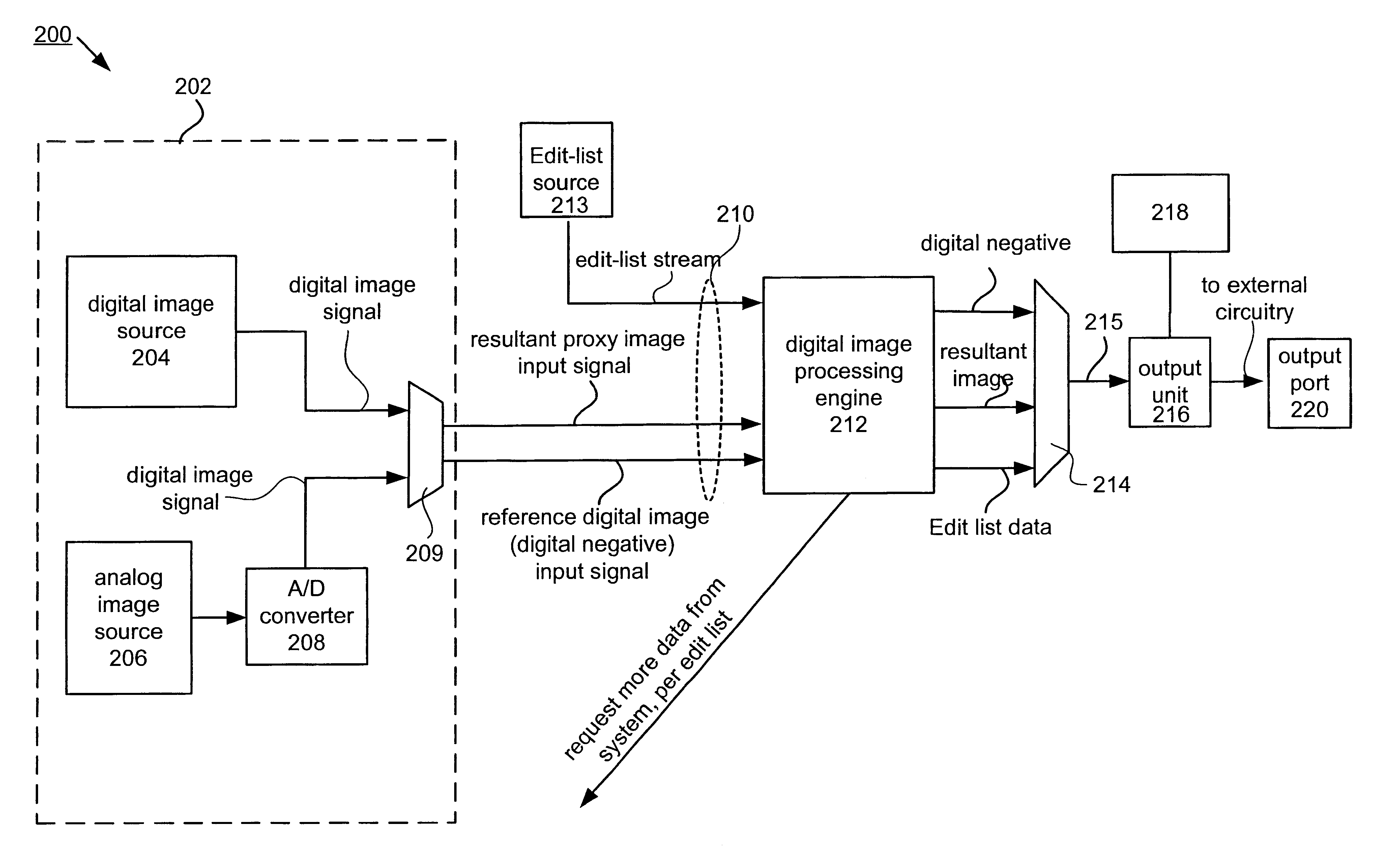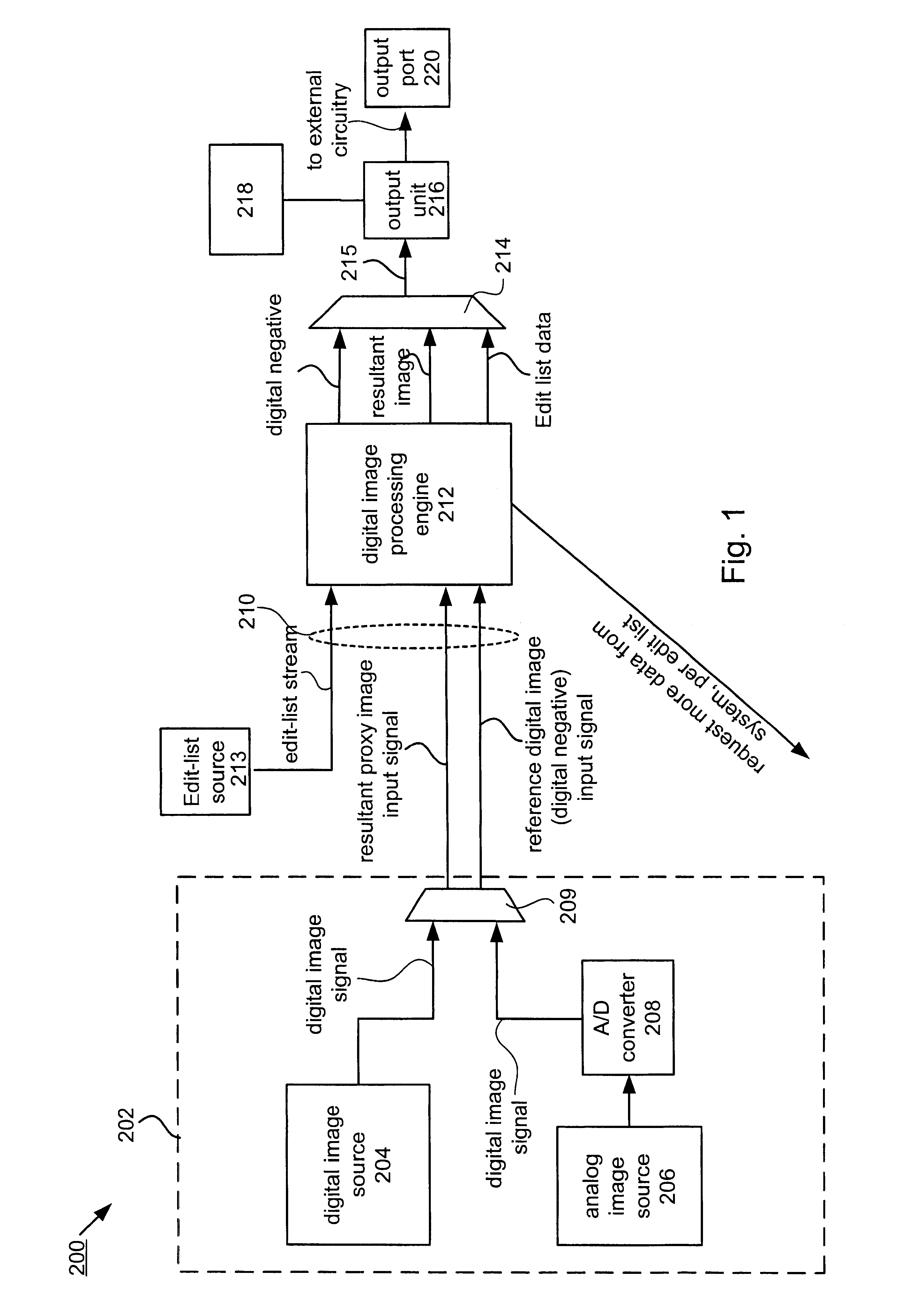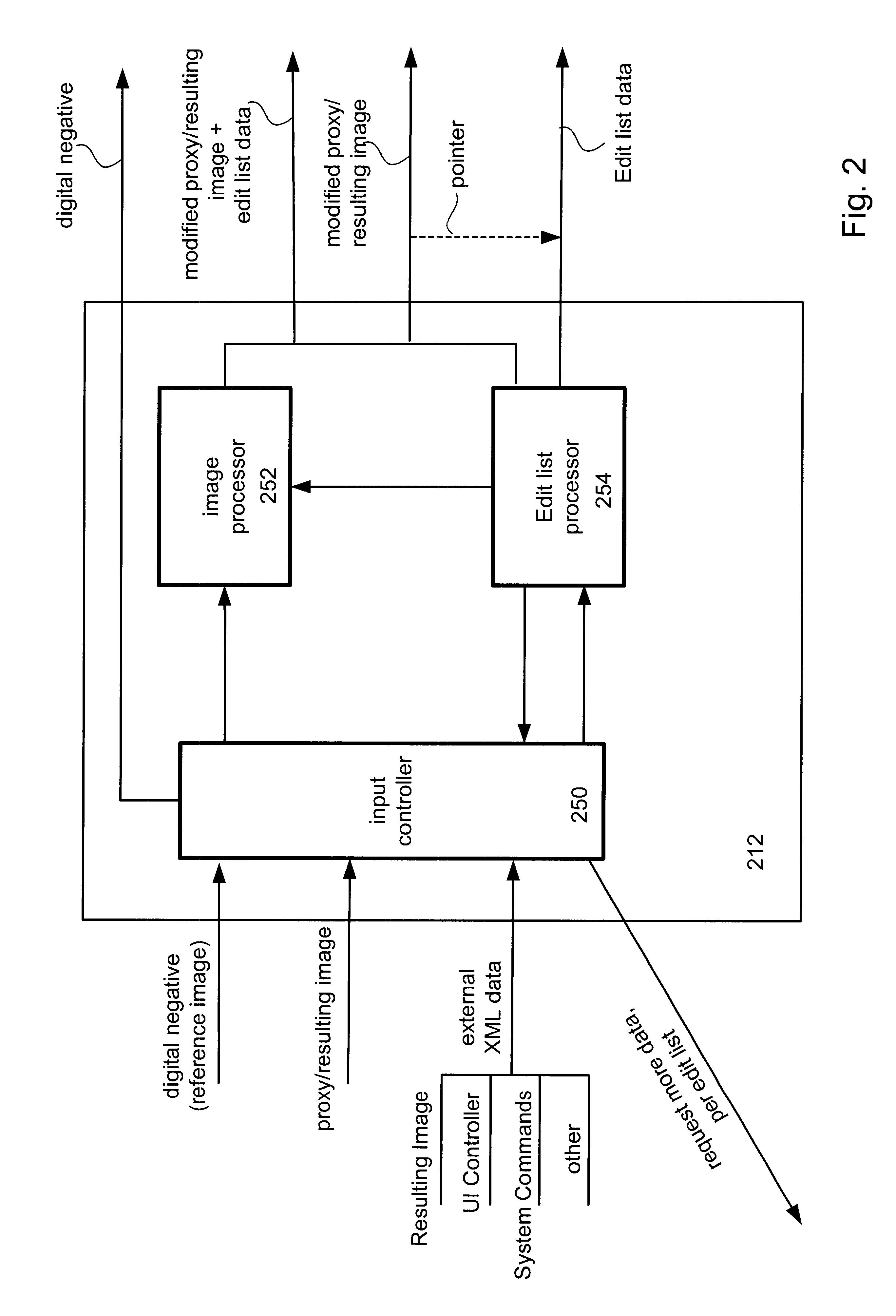Techniques for automatically providing a high-resolution rendering of a low resolution digital image in a distributed network
- Summary
- Abstract
- Description
- Claims
- Application Information
AI Technical Summary
Benefits of technology
Problems solved by technology
Method used
Image
Examples
first embodiment
It should be realized that an "edit list" can take the form of a variety of different embodiments, three of which are described below. This is meant to describe different variants of an edit list, but not an all-inclusive list. The first embodiment is a list that describes a set of individual operations that are to be performed on a given photo. These edit operations can be applied to a photo to generate the resultant image at the desired output resolution. The advantage of this structure is that new edits can be added to the end of the list or removed from the end of the list through an "undo" operation. A first sample piece of XML code is included for illustrative purposes:
href="www.pictureiq.com / samples / nicholas.jpg" content-type="image / jpeg" / >
An alternative embodiment is to use this list to represent a state description of each operation applied to the photo, in which certain operations can be turned on ...
third embodiment
A third embodiment combines the benefits of the first two embodiments. The edit list not only represents the state description of operations, but also includes the ability for one or more of the operations that are part of the state description to be a list of individual operations that are to be applied to the photo, thus merging the two methods
It should be noted, this architecture also allows an application to describe access to multiple resolutions of a digital negative from a single file. For example, multiple resolutions of the same image (at different resolution) could be externally linked via the "edit list" that describes the cross-reference between the various distributed image files. In this case, the "edit list" is the "glue" that holds the structure indicative of how each file is interrelated, but not necessarily the "script" that describes additional editing operations, here the "script" portion of the edit list is empty or null. For example, in one implementation, the ...
PUM
 Login to View More
Login to View More Abstract
Description
Claims
Application Information
 Login to View More
Login to View More - R&D
- Intellectual Property
- Life Sciences
- Materials
- Tech Scout
- Unparalleled Data Quality
- Higher Quality Content
- 60% Fewer Hallucinations
Browse by: Latest US Patents, China's latest patents, Technical Efficacy Thesaurus, Application Domain, Technology Topic, Popular Technical Reports.
© 2025 PatSnap. All rights reserved.Legal|Privacy policy|Modern Slavery Act Transparency Statement|Sitemap|About US| Contact US: help@patsnap.com



